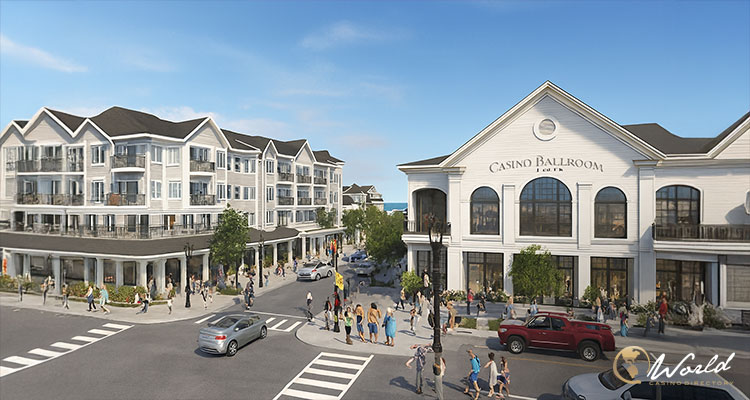Updated Redevelopment Proposal for Hampton Beach Casino
Developers of the Hampton Beach Casino have presented a new redevelopment plan that shifts from a Miami-inspired design to one that reflects Traditional New England aesthetics. This proposal, shared with the Hampton Planning Board on October 1 by owners Sal Lupoli and Fred Schaake, is a pivotal move towards transforming New Hampshire’s historic seaside location into a year-round tourism and entertainment hub.
The extensive project will cover the area between F and D Streets, featuring a 208-room hotel, 99 luxury condominiums, 38,500 square feet designated for retail and dining, and a 52,000-square-foot charitable gaming casino. Additionally, plans include a 3,500-seat entertainment venue and a parking garage with 732 spaces.
While the Planning Board has postponed the application for further discussion until November 5, this marks the developers’ first official submission after prior conceptual meetings. The Zoning Board has already approved variances concerning height, density, and the enhancement of charitable gaming facilities.
A Century-Old Landmark Poised for Renewal
Established in 1899, the Hampton Beach Casino has been a vital part of the local economy and community. Its renowned Ballroom has hosted legendary acts such as Led Zeppelin and U2, attracting visitors for over a century. Schaake remarked, “It was the place to be 100 years ago. How do we create something that lasts for the next generation for a century?” The developers aim to incorporate elements of the Casino’s rich history, with Lupoli suggesting that artifacts from the building’s basement could be transformed into artistic displays.
A More “New England” Design
The revised design emphasizes a tiered, “wedding cake” structure that resonates with the coastal environment, moving away from the earlier angular forms. Rick Friberg, president and CEO of TEC, expressed that the new architecture is “much more New Englandy, and much less of the Art Deco, Miami thing.” Enhancements will also provide more pedestrian space, aligning with goals to make the beachfront more accessible and family-friendly.
Economic Impact and Year-Round Growth
An economic report presented by State Representative Chris Muns predicts significant economic advantages from the redevelopment. It is expected to create 1,700 construction jobs and generate $168.4 million in economic activity during construction, along with an $8.7 million increase in tax revenue. Once operational, it will maintain 1,100 permanent jobs, stimulate $140.6 million in annual economic activity, and add $14.7 million in recurrent tax revenue.
This development is projected to elevate Hampton’s overall property value by 8%, contributing an additional $311 million to the tax base. The town and school districts could see $3.65 million more in annual property taxes. The developers also intend to provide $3.7 million for one-time infrastructure improvements, which encompasses traffic signals and pedestrian crossings.
Next Steps for the Project
If approved, construction could commence as early as 2026. Additionally, developers are considering a potential second phase north of D Street, which might be connected via a pedestrian bridge. Future expansion could also include more residential units, depending on market demand.
Community leaders, including Selectman Chuck Rage, have shown support for the initiative, calling it a continuation of improvements that have fostered Hampton’s growth in recent years. Representative Muns encapsulated the sentiment, describing the project as a unique chance to revitalize one of New Hampshire’s cherished landmarks, urging, “Let’s push the ball over the goal line and make this once-in-a-lifetime opportunity a reality.”



